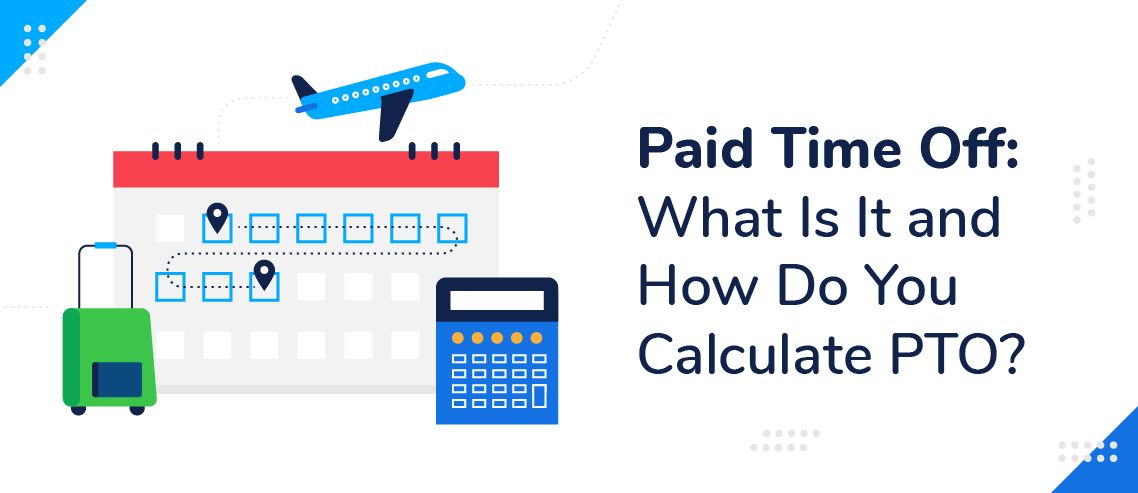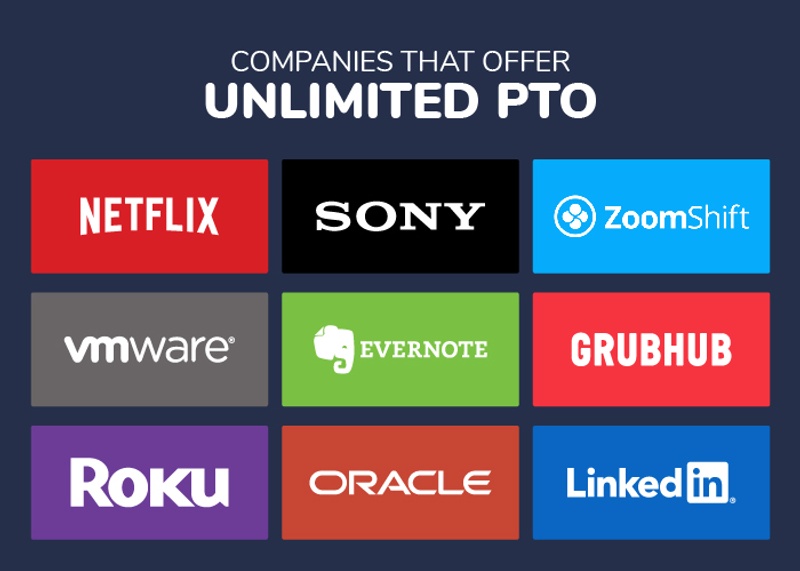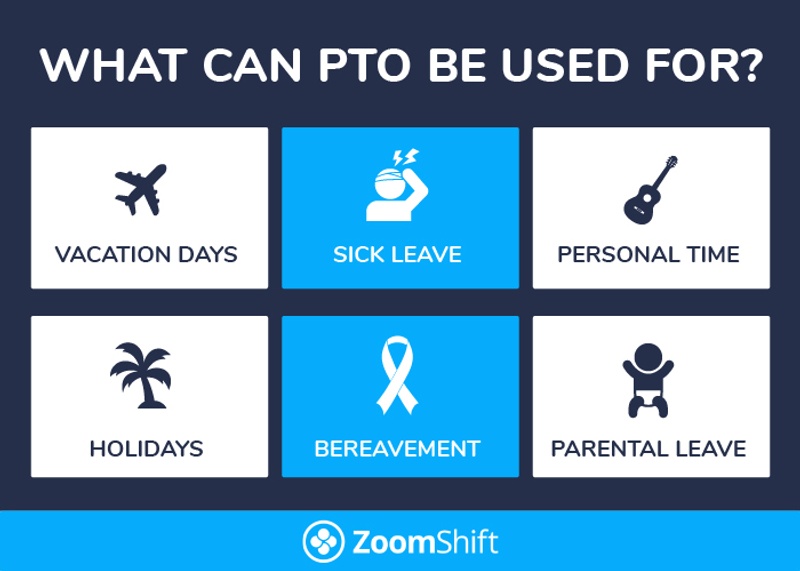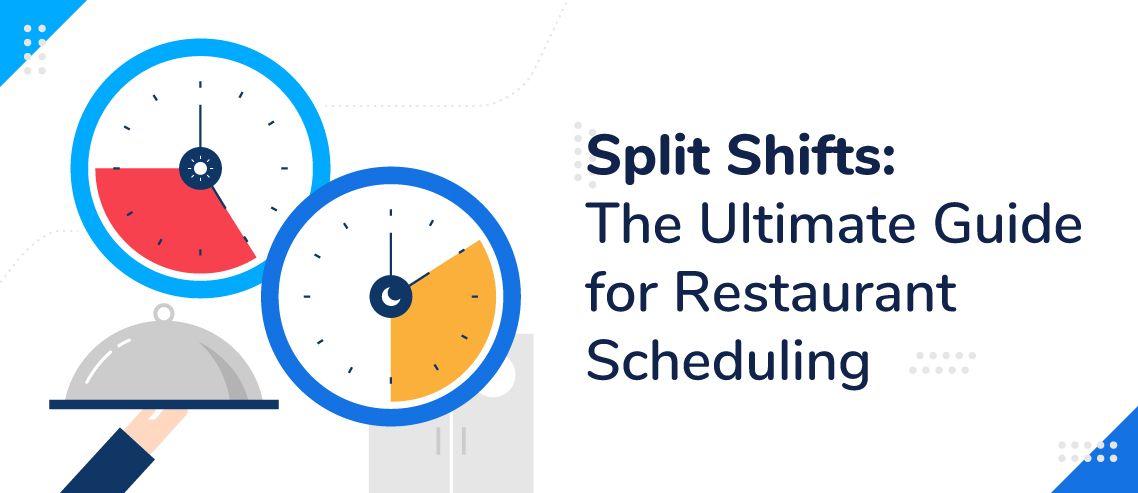Paid Time Off: What Is It and How Do You Calculate PTO?

From a business standpoint, Paid Time Off (PTO) is more than just a perk. It’s a strategic decision that affects company culture, employee morale, retention, and the overall financial health of the business.
Although it’s not legally required in many places, PTO has become a key part of compensation packages and can sway job seekers when they’re deciding on offers. This is why knowing the ins and outs of PTO is important for every modern business.
This guide will cover everything about PTO, from its advantages and disadvantages to the associated policies and calculation methods. We will also provide some insights on effectively implementing PTO policies within your organization.
Let’s begin!
What Is Paid Time Off?
Paid time off, commonly referred to as PTO, is a time when an employee receives compensation despite not working. While it may surprise some people, paid time off is not a guaranteed right for the majority of workers in the US and it instead relies on individual businesses to decide their own policies.
In the US, it’s generally up to employers to decide whether they want to offer paid time off, and the policies they use to do this. This can be an important decision for managers, as there are some distinct benefits and drawbacks to PTO.
76% of American workers have access to paid holidays, so the majority of businesses see the benefits in offering paid time off, but they each implement it in their own way.
As legislation surrounding PTO is thin, it means businesses need to think hard about how they want to approach this issue. Any policy has to benefit both the business and its employees, but often paid time off can end up being a hassle for both.
Why Offer Paid Time Off?
At its most basic level, employment is about getting paid to work. Smart businesses don’t pay people for their time, they pay them for their output. Humans have a limited attention span, and they have limited energy reserves. If we don’t replenish those energy reserves from time to time, then our output can drop drastically.

Sure, there’s always that one person that lives for work and never takes holidays — but does this ultimately enable them to do their best work?
More time spent working doesn’t necessarily mean you get more work done. In fact, regular breaks (both short breaks during the day, and longer breaks throughout the year) make people more efficient in the long run.
If your business doesn’t offer PTO, then your employees have less incentive to take the time they need to refresh themselves and maximize their output. Anything you can do to improve your offering benefits your business.
A good paid time off policy can lead to improved performance, better employee morale, and fewer accidents and errors.
How Does PTO Work?
Paid time off is largely decided by employers, which means there are different ways it can be enacted. Every business is unique, which means the way they manage paid time off is going to be different.
It’s about balancing the needs of your business with the needs of your employees and scheduling your workforce to get maximum efficiency.
If your paid time off policies isn’t achieving this balance, then it’s time to look at new ways to use PTO to benefit your business.
Traditional vs Unlimited (Discretionary) PTO
Paid time off is often broken down into two categories: traditional PTO and unlimited (discretionary) PTO.
Traditional paid time off is probably the system we’re most likely to think of when thinking of PTO. Employees are given a set number of PTO days or hours, and each hour they use comes out of that bank. For example, your business might assign employees 80 paid time off hours per calendar year.
Within traditional PTO, there are two common ways to assign PTO hours. The first is accrual, where employees earn PTO for each day or hour they work. The other is a bank, where employees are given a set number of hours for a certain time period.
Up until recently, virtually all businesses would have a traditional PTO system. In recent years though, businesses have been thinking hard about how they can benefit more from paid time off policies, and unlimited time off has become more and more popular (LinkedIn, Netflix, Oracle, and many others offer this, including ZoomShift. Yes, we practice what you preach.

With unlimited PTO, Employees have no limit on the number of paid time off hours they receive, but the time has to be OK’d by a manager. While there is still oversight over when paid time off is taken, this method empowers your employees by giving them the responsibility of running their schedule so that they get the most out of their performance.
Along with employee scheduling, ZoomShift can help you manage your paid time off in both traditional and unlimited PTO policies. It comes without any additional cost.
What Can PTO be Used for?
PTO can be used as the employee sees fit. Paid time off policies is a recognition that employees have busy lives outside of work, and sometimes, they need some time off to tend to certain things.
To have a prosperous, efficient workforce, it’s beneficial for your employees to have the time they need to take care of their home life. PTO allows workers to do this by giving them control over how they spend their time.
- Vacation days — these are days employees can use to take a vacation or simply relax while they take time away from work
- Sick leave — sick leave is paid time off employees receive if they are sick
- Personal time — Personal time is hours within a day where employees take a short leave from work to visit the dentist or doctor, etc.
- Holidays — national, regional, and local holidays
- Bereavement — Time taken off due to the death of a loved one
- Parental leave — Many states have legislation to ensure parental leave, but in some, this is at the discretion of the business

The variety of different types of paid time off can make your policies much more complicated. This is something you need to think about and decide where your company stands in each area.
Paid Time Off Policies
Paid time off is an important part of the business that has big repercussions for both management and employees. Complicated policies that aren’t well-articulated and calculated properly cause needless hassle, so it’s important to have a clear idea of your obligations in the following areas.
1. Legal
What are your legal obligations relating to paid time off?
For example, not every state requires employers to pay an employee’s unused vacation time, whether they leave on their own accord or are terminated from their position. However, some states, such as California, are legally required to pay out unused vacation time.
Each locality has its own framework you’ve got to work with, but it’s up to you how you develop your policies beyond that.
2. How Do Employees Accrue Paid Time Off?
This is one of the first questions you will have to answer. How do you want to assign paid time off?
Will you give everyone a set amount? Will employees earn time off based on the hours they work? Will you go with the unlimited option?
Each option will come with its benefits and drawbacks, so think about which option best matches your needs.
3. Will Unused Days Roll Over?
What happens if an employee doesn’t use their paid time off?
You offer paid time off because you want your employees to take a break, but what happens if they don’t use it? Do you let it roll over to next year? Do you pay it off? Do they lose it?
These are sensitive questions you will have to answer.
4. What Happens if Someone Finishes their Employment and Has Unused PTO?
Another policy you have to decide on is what happens to unused paid time off when someone finishes their employment. Do you pay it off, or do they lose it?
It might seem like a small detail, but it’s something you will need to think about with your paid time off policies.
5. Are there Certain “Blackout Dates,” where Employees Can’t Take PTO?
Depending on your business, there might be certain dates where you just can’t afford to have employees off work. If this is the case, then you may have some blackout dates where PTO isn’t permitted.
This works well in a seasonal business, but remember, the more you restrict the times when employees can take PTO, the more likely you are to have multiple people off at the same time.
Pros and Cons of PTO
Paid time off is a concept that’s developed over time. At first, the thought of businesses paying people not to work must have been quite alien to people, but over time, we’ve started to see the benefits of these policies.
The right PTO policies can have a big impact on many different areas of a business, but it’s not without its challenges.
Pros
- Higher morale — even for people who love their jobs, it’s nice to have some time off to relax.
- Improved performance — we do our best work when we’re energized and focused, it’s hard to do this without a little time off.
- Giving your employees responsibility — often when you give people responsibility, they reward you — with PTO this means loyalty and improved performance.
- Employee retention — better morale, and coming to work refreshed, they’re all benefits that make people want to stay with your business.
- Attracting talent — Jobseekers look at perks. If two jobs are exactly the same, but one offers good PTO, which one will you choose?
- Lower costs — Improved performance and better employee morale and health can lower your costs. Fewer accidents and errors are likely to occur and fewer sick days are taken.
- Better organization — You’re better able to plan because time off is agreed ahead of time, rather than in a reactionary way.
- Reward loyalty — extra paid time off is a great way to reward employees who are loyal to your business.
Cons
- You need to be able to cover missing staff — you need to make sure you have the right balance of skills at any given time.
- There’s no guarantee that people use their PTO to refresh — not everyone will use their time off to rest and recover.
- It can be difficult to schedule — keeping track of paid time off can be time-consuming and challenging.
How to Calculate Paid Time Off
One of the most important aspects of PTO is that managers and employees can easily keep track of how many paid days they have available. The easier you can make this, the more effective your policies are likely to be.
How is PTO calculated, will depend on your PTO policies. Here we discuss all the possible ways to calculate PTO.
1. Annual PTO Bank Calculation
The annual PTO bank calculation is perhaps the most simple.
Decide how many hours of paid time off employees start the year with, and subtract the hours as they use them.
Say Kelsey starts the year with 80 hours and decides to take a week of vacation. Simply subtract 40 (5 days times 8 hours) from the original 80 hours, and she’s left with 40 hours of PTO.
2. Working PTO Accrual Method
Wondering how to calculate PTO accrual. Well, this method assigns PTO based on the number of hours worked.
Kelsey works a full-time schedule of 40 hours per week, and she works 50 weeks per year. Taking the 50 weeks times her 40-hour workweek, you get a total of 2,000 total hours worked per year.
If Kelsey’s company offers 80 hours of PTO a year, then the calculation will look like this.
80 Hours of PTO ÷ 2,000 total work hours = 0.04 PTO hours accrued per hour worked.
For every hour Kelsey works, she will receive 0.04 hours of paid time off. Many businesses see this as the fairest way to assign PTO.
3. Daily PTO Accrual Method
Daily PTO accrual is a simple method for employees who work regular 8-hour days.
Your company offers 80-hours of PTO, and Kelsey is expected to work 250 days a year (5 days a week times 50 weeks). 80 hours of PTO divided by 250 days means that Kelsey earns 0.32 PTO hours per day she works.
This calculation gives your employees a clear idea of how they earn PTO, and “how much their time is worth.”
4. Weekly PTO Accrual Method
Weekly PTO accrual is very similar to the daily PTO calculation.
Instead of breaking the time down into days, you’re simply dividing your total annual number of PTO hours by the number of weeks you work. So, in Kelsey’s case, this will be 80 PTO hours divided by 50 weeks of work — 1.6 hours of PTO earned each week.
Again, this calculation works better for employees on full-time schedules.
5. Unlimited PTO
With unlimited PTO, there’s no need to keep track of how much PTO employees are taking, so there are no calculations. However, in such a flexible system, it’s vitally important that you have a good employee scheduling system in place so that you can keep track of when everyone is working.
This system can be quite hectic if you’re not properly organized, so it’s important you have good systems in place to help you manage your unlimited PTO.
Keys to Enacting Successful PTO Policies
Whether you choose a traditional PTO method or unlimited, the most important thing is how you implement it. You may have the best intentions with your PTO policies, but if they’re not enacted properly, then you’re going to struggle to see the benefits.
Scheduling is vitally important- you need to have a clear idea of who is working when. You can’t have everybody off work at the same time, so your ability to keep track of when people are taking PTO is essential.
You also want your PTO policies to be fair and give people the rest they need. You can’t do this without having a good way of tracking PTO. It needs to be quick and easy for employees to see how much time they have left, and for you to be able to approve hours.
Without the right systems, this is going to be extremely challenging and can add a huge amount of extra work for your HR team.
Scheduling and Managing PTO with ZoomShift
Paid time off is important for any business, but it’s also got to be efficient. If you’re using outdated methods to keep track of PTO, then you’re not likely to see its full benefits of it.
ZoomShift makes PTO easy by bringing everything together in one place.
Not only can you create efficient schedules in minutes using intuitive templates, track employee timesheets and attendance but you can also manage PTO directly through the system. This allows management and employees to see exactly how much PTO they have available, making it simple to plan ahead.
This helps companies that switch to ZoomShift to organize their PTO, become more productive, and communicate better — exactly what you need for a successful PTO policy.
Frequently Asked Questions About Paid Time Off
- Do I have to provide employees with PTO? PTO legislation in the US is largely down to the states to decide. In most states, there isn’t specific PTO legislation, which means it’s up to businesses to decide their paid time off policies.
- Do I have to pay PTO when an employee leaves? It’s always worth checking regulations in your area before you make decisions about your PTO. In most cases, it’s not a requirement to pay PTO when an employee leaves.
- How can I keep track of employee’s PTO hours? The best way to keep track of employee PTO hours is through scheduling and time clock software like ZoomShift.
Conclusion: Paid Time Off
Choosing your business’s paid time off policy is an important step.
In an increasingly competitive world, where every business is looking for top talent, a great PTO policy can be a brilliant way to attract top recruits. Throw in the fact that paid time off can help your employees become more efficient, and often results in increased loyalty, then there are a lot of reasons to invest in your PTO.
The important thing is that you consider your policies carefully. There are lots of questions you need to answer, and you need to make sure the policies you decide on work for your business.
Once you’ve set out your policies, then you need to invest in making sure they’re enacted smoothly. The key to this is good scheduling and excellent organization, and for this, you need ZoomShift.
JD enjoys teaching people how to use ZoomShift to save time spent on scheduling. He’s curious, likes learning new things everyday and playing the guitar (although it’s a work in progress).



